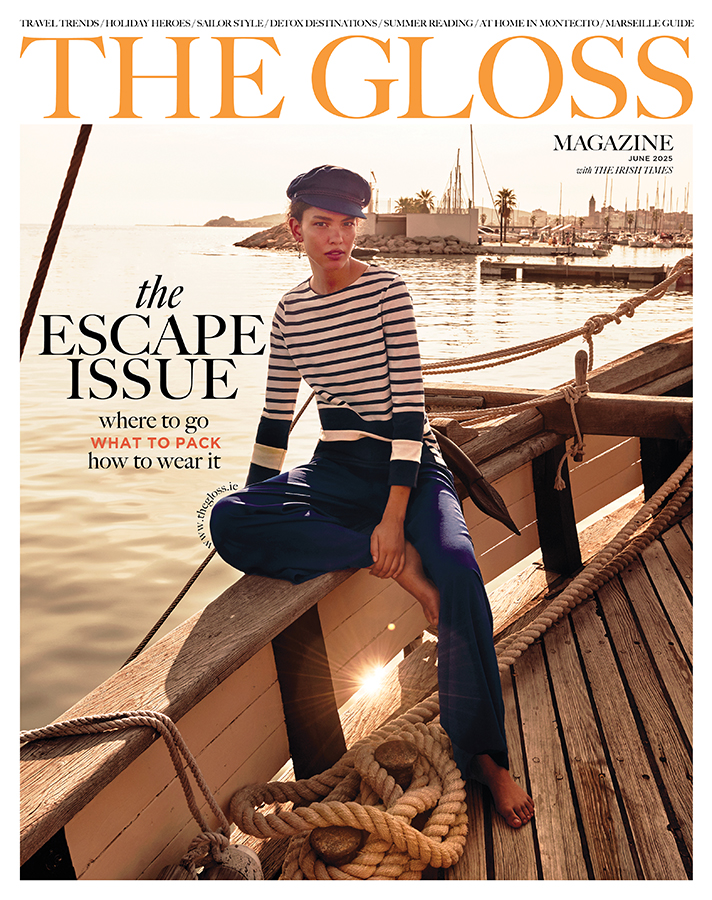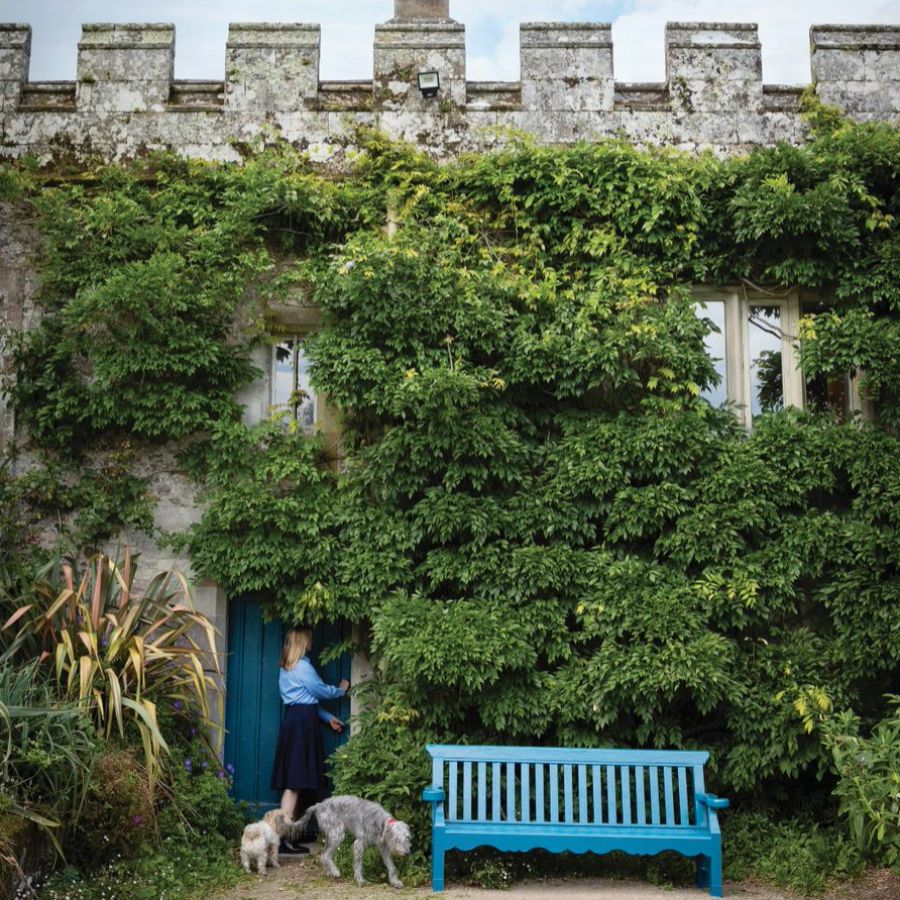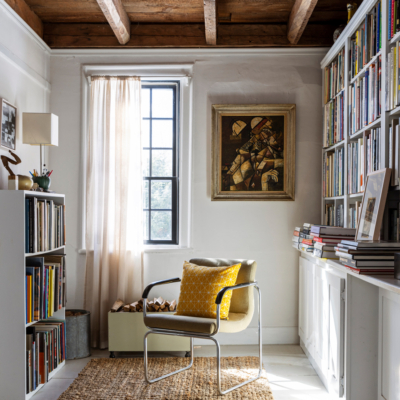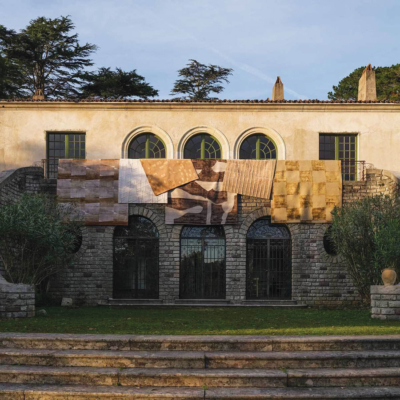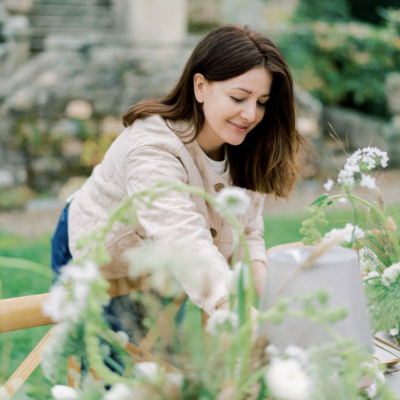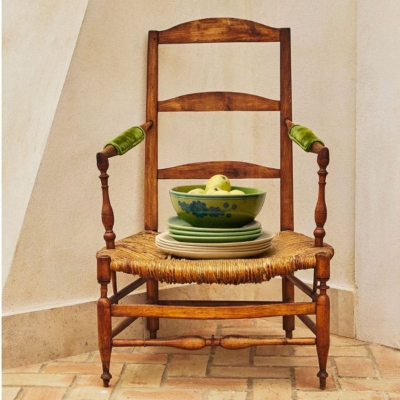Laura Burlington gives us a tour of Lismore Castle, inside and out …

Laura Burlington with dogs Pins and Needles.
In my experience the interiors of Lismore – a combination of gothic patterns and clutter, some of it modern, some of it old, some of it good and some of it won at the local fair – immediately make people feel comfortable. It is all gathered and presented with equal importance, and because no one family has lived full-time in the main part of the castle since Adele Astaire’s tenure (she was married to Lord Charles Cavendish and lived at Lismore between 1932 and 1944) no one has ever cleared it up.

The drawing room with 18th-century tapestries.
In fact, you can still find Adele’s records on the sideboards and her novels on the bookshelves. The castle has such a particular atmosphere, and one of my worries as one of the present incumbents is how not to spoil this. It was sensitively refurbished at the beginning of the century by my parents-in-law, who added significantly to the collection of Pugin furniture and Watts wallpaper. I find it quite difficult to change anything in the castle.
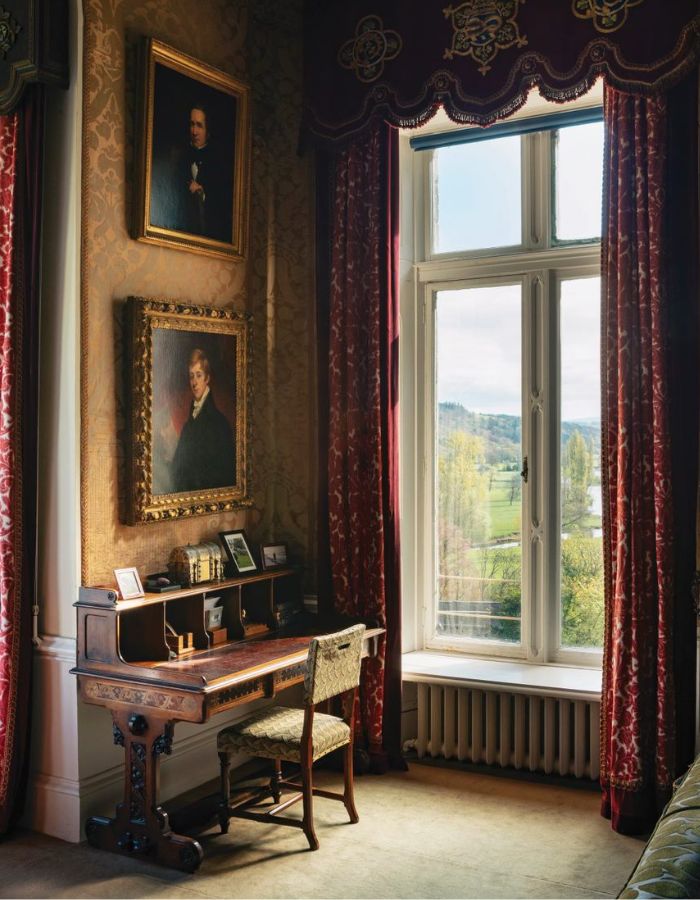
A writing desk with a view of the Blackwater river.
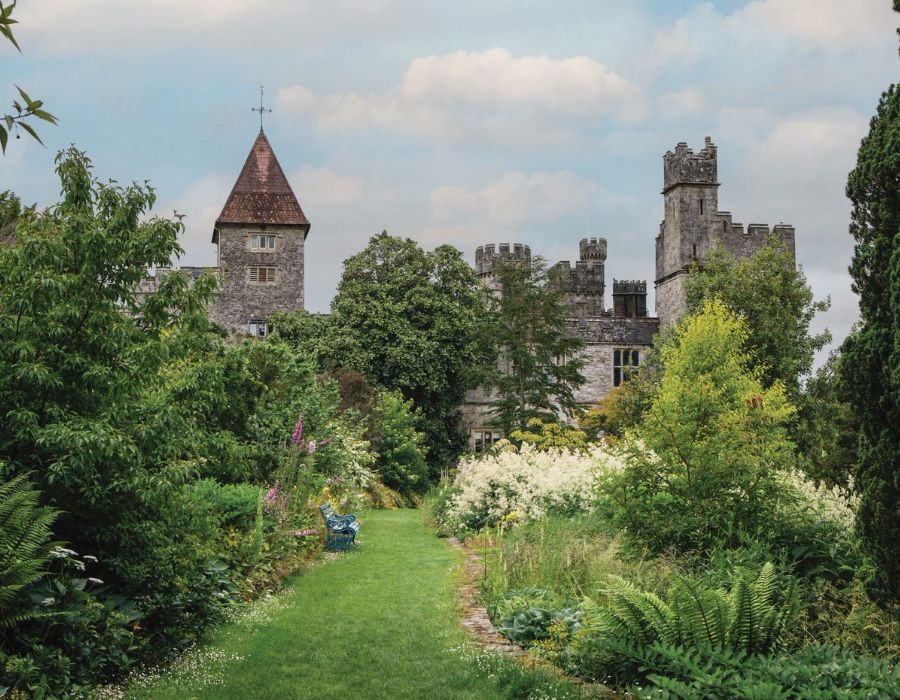
Lismore’s gardens have been open to the public since the 1960s.
The gardens are a different matter altogether. They were opened by my husband William’s grandparents in the 1960s. William opened the gallery, Lismore Castle Arts, in a derelict wing in 2005, and garden visitors have been joined by those on contemporary art pilgrimages. Their beauty is that they are constantly dynamic – living, dying and aggressively growing. A surprising moment of freedom arrived with box blight, when we were forced to remove all the formal box hedging in the garden. As a consequence, a much looser perennial style has become Lismore’s latest look.

A table set with dishes of gooseberry and elderflower ice cream.
At Lismore Castle in spring we prepare hazel hurdles for supporting peas, beans and sweet peas, as these can be readied in advance of planting when the weather warms. The vegetable plots and flowerbeds need to be prepared for the seeds or plugs to be planted once temperatures have increased.
In recent years we have adopted no-dig principles to improve soil health and soil structure, with the added bonus of reducing weed pressure over time. However, we still have to relieve the compaction of the soil that our heavy annual rainfall creates. We achieve this using a tool called a broadfork, which instead of turning and disturbing the soil, simply adds air into it, relieving any compaction. We broadfork the soil before planting the new plants and then add a layer of compost on the soil surface.
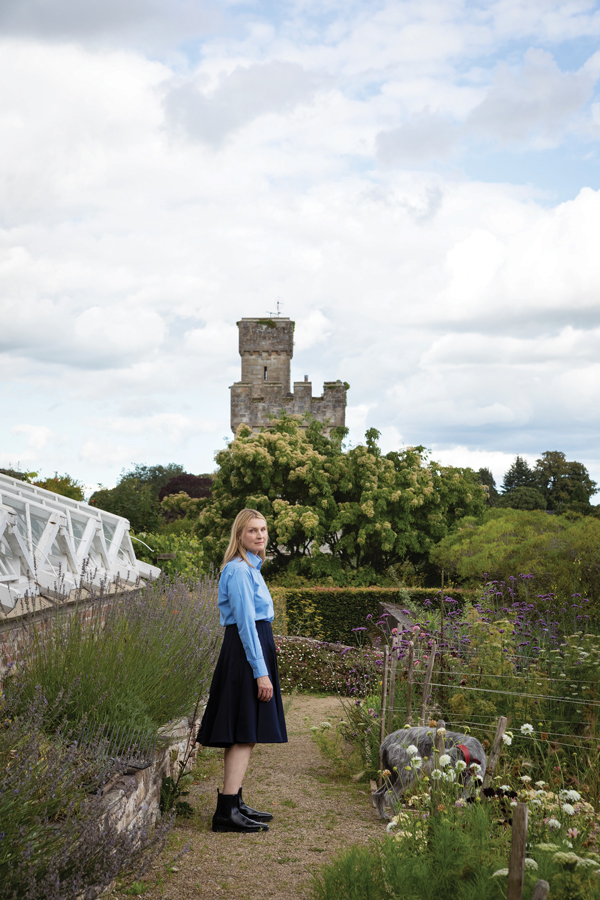
Laura Cavendish, Countess of Burlington.
We start planting seeds in trays in the polytunnels in early spring and after four weeks of growing in seed trays, many plants we cultivate, such as kale, chard and celeriac can be transferred into pots. We make our own compost at Lismore, and while viewing our compost heaps is far from the most glamorous part of a visit here, they are undoubtedly important to the health of the gardens. As you enter the top of the gardens, our large heaps are in full view – a testament to the cycle of growth and production that happens within the garden’s walls.”
An extract from Lismore Castle: Food and Flowers from a Historic Garden, Laura Burlington, €46.67, Rizzoli.




